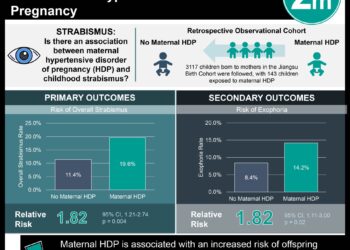Quadruple combination pill for hypertension is more effective at lowering blood pressure than standard dose monotherapy
1. Participants on reduced dose quadpill medication showed a greater reduction in blood pressure compared to participants on the standard dose irbesartan monotherapy at 12 and 52 weeks after randomization.
2. Participants on monotherapy management required more frequent uptitration compared to the quadpill group.
Evidence Rating Level: 1 (Excellent)
Study Rundown: Hypertension management is complex, often involving multiple trials of various classes of anti-hypertensives before achieving target blood pressure. It was theorized that an ultra-low-dose quadruple combination pill would be more effective as first-line treatment than standard dose monotherapy. This phase 3 Australian drug trial randomized participants with a clinical diagnosis of hypertension to receive either the quadpill of irbesartan, amlodipine, indapamide, and bisoprolol or a monotherapy control (irbesartan). Results of this study found that quadpill therapy was significantly more effective at lowering systolic and diastolic blood pressure compared to the control group. Participants on the quadpill were more likely to reach clinical blood pressure targets. There was no significant difference in adverse events between the two groups. Limitations of this study was its lower-than-target sample size due to the COVID-19 pandemic and inability to confirm patient compliance, which was only measured by pill count. Nevertheless, this phase 3 study provides promising results for the effectiveness and safety of a combination pill for hypertension.
Click to read the study in the Lancet
In-Depth [randomized controlled trial]: QUARTET is an Australian randomized, double-blinded phase 3 drug trial. There were 591 participants with either uncontrolled or monotherapy-treated hypertension. The mean age of participants was 59 years and 60% were male. 300 were randomized to the intervention group (quadpill) and 291 were randomized to monotherapy. The quadpill was a combination of 37.5 mg irbesartan, 2.5 mg bisoprolol, 1.25 mg amlodipine and 0.625 mg indapamide. The monotherapy control was 150 mg irbesartan. Office blood pressure was taken at baseline, 6 weeks, 12 weeks and 52 weeks. Analyses were done based on intention-to-treat populations.
At 12 weeks, the difference in systolic blood pressure between intervention and control group was -6.9 mm Hg (95% CI -4.9 to -8.9 mm Hg, p<0.001), favouring the intervention group. Diastolic blood pressure was similarly reduced in the intervention group compared to the control group by -5.8 mm Hg (p<0.0001). Secondary measures (ex. 24h systolic ambulatory blood pressure, daytime systolic BP, nighttime systolic BP) were also reduced in the intervention group compared to the control group. These differences persisted to 12 months in the participants that agreed to extended follow-up. For example, at 12 months, mean systolic office BP was -7.7 mm Hg (p<0.0001) lower in the intervention group compared to the control. In addition, for patients in the extended follow-up group, those in the monotherapy group required more frequent uptitrations compared to the quadpill intervention group (p<0.0001). As for serious adverse events, there were seven in the intervention group and three in the control group.
Image: PD
©2021 2 Minute Medicine, Inc. All rights reserved. No works may be reproduced without expressed written consent from 2 Minute Medicine, Inc. Inquire about licensing here. No article should be construed as medical advice and is not intended as such by the authors or by 2 Minute Medicine, Inc.







